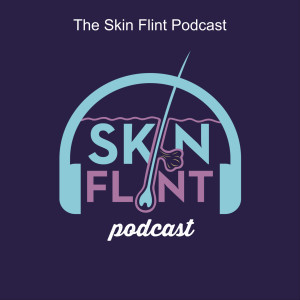
This month, Skin Flints welcomes a European and Australian boarded veterinary dermatologist, Sonya Bettenay.
Show Notes
(00:00) John introduces this month’s podcast, his co-hosts, and the topic.
Chapter 1 – First Cut: Introducing Skin Biopsies
(02:21) John invites Sonya to introduce herself, and she discusses her current work in Munich - focusing on skin biopsies, clinical practice, and teaching. Sue highlights Sonya's credentials, noting her Australian and European board certifications. Sonya explains her dermatology training in Australia and California and her involvement with the ECVD as an examiner and tutor.
(03:57) Sue and Sonya discuss the challenges pathologists face in interpreting biopsy samples and the importance of taking quality samples to aid diagnosis. Sonya reflects on improvements in biopsy submissions over the years but notes that obtaining multiple samples often provides a more comprehensive picture.
(05:31) John asks Sonya to explain what a skin biopsy is. Sonya describes it as a microscopic examination of the skin, providing insights beyond surface-level observation. Sonya outlines cases where biopsies are useful, such as unusual presentations that deviate from common conditions, and emphasises the need to tailor biopsy timing based on the patient's condition.
Chapter 2 – Going Deeper - Steps Before Biopsy
(09:15) Sue asks Sonya whether biopsies should replace basic investigative tests. Sonya emphasises that fundamental diagnostic steps such as skin scrapes, hair plucks, and impression smears should be performed first in most cases. However, she highlights exceptions, particularly for vesicular or severe oral mucosal lesions, where early biopsy is crucial to diagnosing immune-mediated conditions.
Sonya explains the importance of maintaining the integrity of vesicular lesions during biopsy to ensure accurate diagnosis. She stresses the need to take elliptical samples to include surrounding healthy tissue and avoid disrupting the lesion structure.
(11:52) Sue and Sonya discuss the distinction between primary and secondary lesions. Sonya explains that primary lesions, such as pustules and vesicles, provide the most diagnostic value, whereas secondary lesions, like crusts and alopecia due to self-trauma, may offer limited insights.
(15:15) John asks about choosing biopsy techniques. Sonya shares her preference for biopsy punches due to their precision and ease of use, while acknowledging the importance of elliptical excisions for fragile lesions like vesicles. She explains the technical aspects of both methods and how they can impact diagnostic outcomes.
Chapter 3 – Preservation - Sustainability and Practical Considerations
(19:30) Sue raises concerns about the sustainability of single-use biopsy punches. Sonya explains that while some attempts to sterilise and reuse them have been made, they often result in decreased sharpness and reliability. She advises using new punches for best results but acknowledges the need for sustainable alternatives.
Sonya discusses her approach to biopsy sampling, recommending taking multiple samples to ensure comprehensive diagnosis. She suggests including normal tissue alongside affected areas for comparison. Sue and Sonya explore potential innovations for more sustainable biopsy tools, such as reusable handles with replaceable blades.
(23:19) John asks if separate biopsy punches should be used for each sample. Sonya clarifies that one punch can typically be used for multiple samples unless dealing with particularly tough tissues that may dull the instrument.
(23:52) John then asks who can take biopsies and Sonya notes that all vets and also veterinary nurses may be able to take samples depending on local regulations, particularly for alopecia cases.
She highlights the importance of orienting samples correctly by marking the direction of hair growth to aid pathologists in accurate analysis.
(27:25) Sue and Sonya discuss the need for deep biopsies in cases of hair loss or deeper inflammation and introduces the concept of shave biopsies as an alternative for delicate areas like the inner pinna.
Chapter 4 – Packing a Punch - Sample Handling and Labelling
(30:50) John asks about the best practices for preparing biopsy sites. Sonya advises against using any antiseptics or alcohol, explaining that preserving surface elements such as bacteria and crusts is crucial for accurate diagnosis. She recommends minimal shaving in the direction of hair growth to retain valuable diagnostic material.
(33:20) John asks about labelling the samples - firstly Sonya provides guidance on handling biopsy samples, emphasising the need for quick placement in formalin to avoid tissue degradation. She recommends gently dabbing samples before immersion to preserve tissue integrity.
Regarding labelling, Sonya highlights the importance of clear sample identification. She discusses techniques such as using coloured dyes or marking sutures to help orient samples and provide context for pathologists.
Sonya also discusses the benefits of using dyes for sample orientation and how different colours can indicate specific sites. Sonya explains how proper labelling ensures better interpretation and helps guide future treatment decisions.
(39:33) John and Sue wrap up the discussion, thanking Sonya for her insights and expressing interest in having her return for further discussions on histopathology.
(41:12) John wraps up the discussion, previewing podcasts to come and asking his co-hosts another odd question.
No comments yet. Be the first to say something!